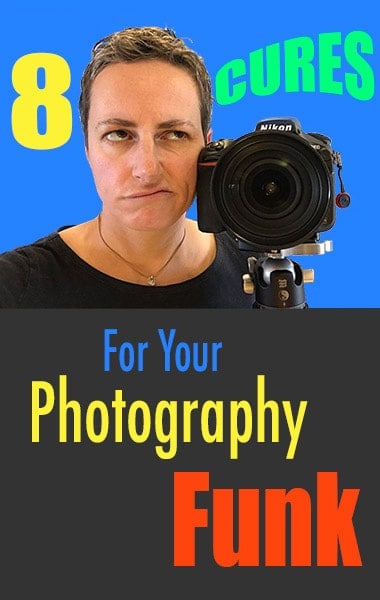
We’ve all had those “off” days. The light isn’t great, the weather is “meh”, you forget to grab charged batteries, your tripod head keeps sticking, you get stuck in traffic and so have less time to explore and shoot. The list could go on and on. Whatever the catalyst, we photographers have days (sometimes weeks!) when snapping the shutter is a dreadful process and the results show it. Days like these can really take a toll on a photographer’s inspiration and creativity. Try these 8 cures for photography funk to help you stay creative and excited about your photography.
Helpful tip – You may want to save this page for those days when you experiencing those photography blues. It is jam-packed with links to other Improve Photography resources to help you get unstuck and back on track.
1. Give Yourself Restrictions
What I mean by giving yourself restrictions is to create a set of rules for your photography for a week or two. Photography composition, techniques, and subjects are limitless. While endless possibilities set the stage for creativity, it can sometimes also get in the way. Boredom is one of the best motivators of creativity. So give yourself some limitations on what you are “allowed” to shoot for a limited time. For example, only shoot in black and white. Focus on what makes a good black and white composition and practice playing around with contrast and different subjects. What do you see differently through these photos and how can you apply that to your photography?

Another idea is to put your least used lens on your camera, and only shoot with that for a week. I did this recently with a 50mm prime lens, which I hadn’t really taken the time to get to know. It’s a focal length that I just don’t use very often as an outdoor photographer. It definitely limited the type of frame I typically try to capture and forced me to be more creative in my compositions. If you try this tactic, I recommend using a prime lens so that you are more restricted than you would be with a zoom lens. You will be forced to move around on your feet more, and this will open up more photographic opportunities at a given location.
Play around with depth of field. We all have our favorite settings for our most common subjects, and sometimes this can lead to getting uninspired by our own work. A simple trick is to change up your depth of field. For example, if you are a landscape photographer, try shooting more intimate scenes with a shallow depth of field to bring out different subjects. It’s not quite as simple as just opening up the aperture and adjusting your exposure. Using different depths of field will change how important different elements are in your composition and can really change the mood of a photo. Practice shooting the same subject at different apertures to get a feel for how depth of field can change your composition.
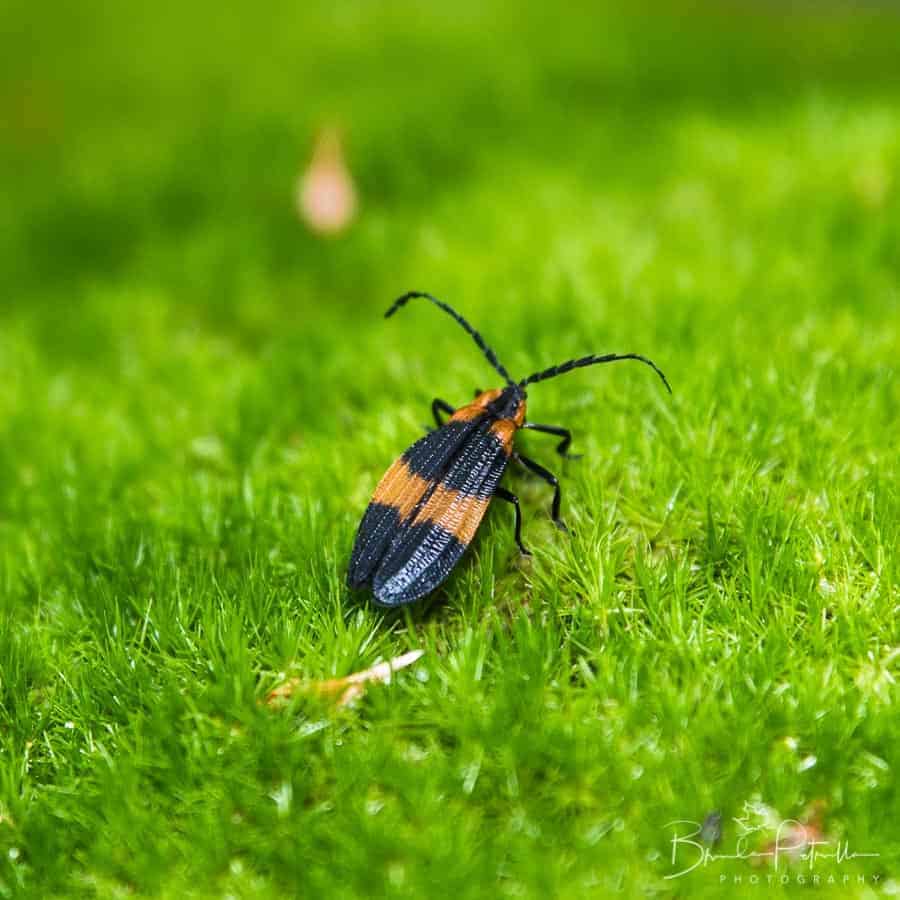
Use manual focus. With lenses being so awesome these days at autofocus, why bother with manual? For one thing, using manual focus slows down your process. By slowing down the process, you are more likely to naturally allow the creative juices to flow. If you aren’t used to manual focus, you may find it irritating at first to use, but it is a good way to train your eye and work more deliberately with nailing your focus point.
2. Practice a New Technique for a Week
If you are feeling uninspired by your work, pick a new photography technique to learn or focus on one you are still trying to perfect. Don’t put it off. Learning a new technique is a great way to refresh how you approach your subjects and how you tell stories through photographs. Here are some examples of techniques to master with links to articles, podcasts, and tutorials on Improve Photography to help you learn these techniques quickly:
a. Long exposures
Perfecting the use of long exposures is a versatile skill to have as a photographer. You can use it to create motion blur effects, photograph waterfalls, and is a must for night sky photography. If you are getting into night sky photography, be sure to check out my recent IP article on night photography accessories before heading out into the dark.

b. Light painting
If you have mastered long exposures in night photography, try adding light painting to your repertoire. Light painting is basically using a light source, such as a flashlight, to overexpose certain areas of your frame by “painting” in the light. The areas receiving the most light will be more exposed than the areas with less or no light painting. Light painting is a little akin to the darkroom technique of burning a print (as in dodging and burning) to increase the exposure of certain areas of an image. Light painting is commonly used to bring out foreground subjects in a night photography scene that would otherwise be left in the dark. It will likely take more than a few tries to get the painting just right, but it will get your artistic juices flowing and is fun to try.
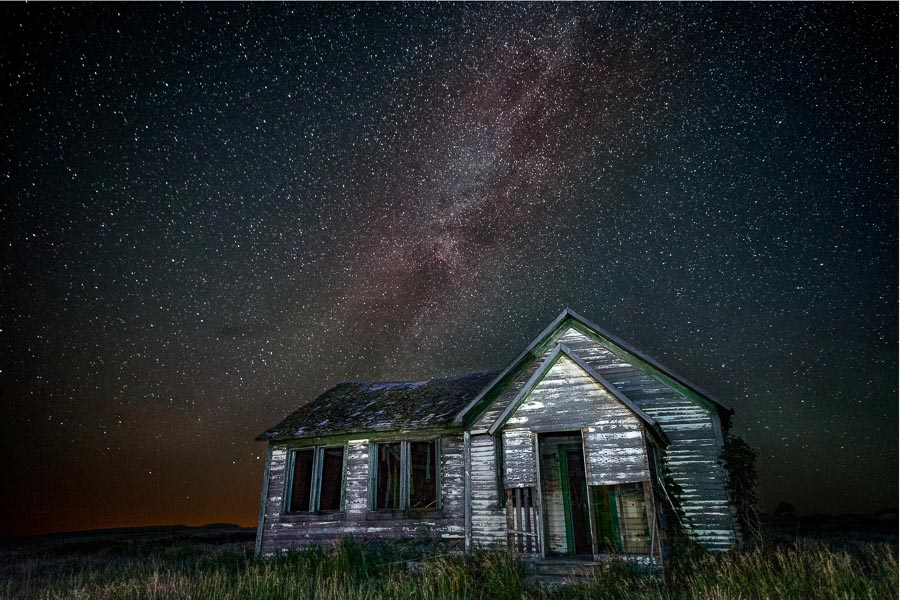
c. High speed photography
Perhaps the corollary to long exposure photography is high speed photography. Learn how to freeze subjects in motion rather than capturing the motion itself. You can really get creative with high speed photography and produce stunning photos from sports to food splashing into water. The possibilities are endless, and you could have a lot of fun using this technique creatively.
d. Off camera lighting
Many of us landscape photographers are very comfortable with shooting during golden hour or blue hour but have no idea how to set up studio lighting for a portrait session. Some landscape photographers may think they don’t need to learn off camera lighting because they will never use it in the field. Admittedly, I am guilty of this myself. However, part of perfecting one’s craft comes from learning methods that are outside of the box of one’s normal workflow. By learning how to manipulate light off camera, we can deepen our understanding of how light travels, reflects, effects shadowing, and can change white balance. This knowledge can be applied across photography genres. To learn more, check out this IP article on 3 Point Lighting, the IP Portrait Session Podcast on Lighting in a Studio, and Jim Harmer’s Lighting in a Flash workshop video on IP Plus.
e. Time-lapse
If you haven’t experimented with time-lapse photography yet, you are in for a real treat. The first time you stitch together your images into a sequence, you will be hooked. Watching your images fast forward through time is just so fun! There is a bit of a learning curve to planning and post-processing of time-lapses, but it is a fun technique to learn and can help get you out of that photography funk. Be sure to read this recent IP article on 13 Sure Fire Time-lapse Photography Tips and to listen to the IP Tripod Podcast on Timelapse Photography to get inspired and started on your time-lapse adventure.
f. High dynamic range (HDR)
Our cameras are getting better and better at capturing more dynamic range, or the range of proper exposures between the highlights and shadows of a scene. That said, cameras today are still unable to capture the vast dynamic range of a scene the way our eyes can. We can optimize photos to accommodate this difference by using HDR photography. HDR photography is commonly used for landscapes but can be used in any genre of photography where there is a high contrast between the highlights and shadows. HDR yields incredible results when done properly, although it can ruin an image if done poorly. Be sure to check out this IP Illustrated Guide to HDR Photography to learn how to execute the HDR technique correctly.
Are you ready to take your HDR photography to the next level? Read this IP article on how to use luminosity masks and listen to the IP Tripod Podcast Review of Luminosity Masks. If you want even more advanced training, be sure to check out Nick Page’s training on IP Plus on Managing Dynamic Range with Luminosity Masks.
3. Focus on One Element at a Time
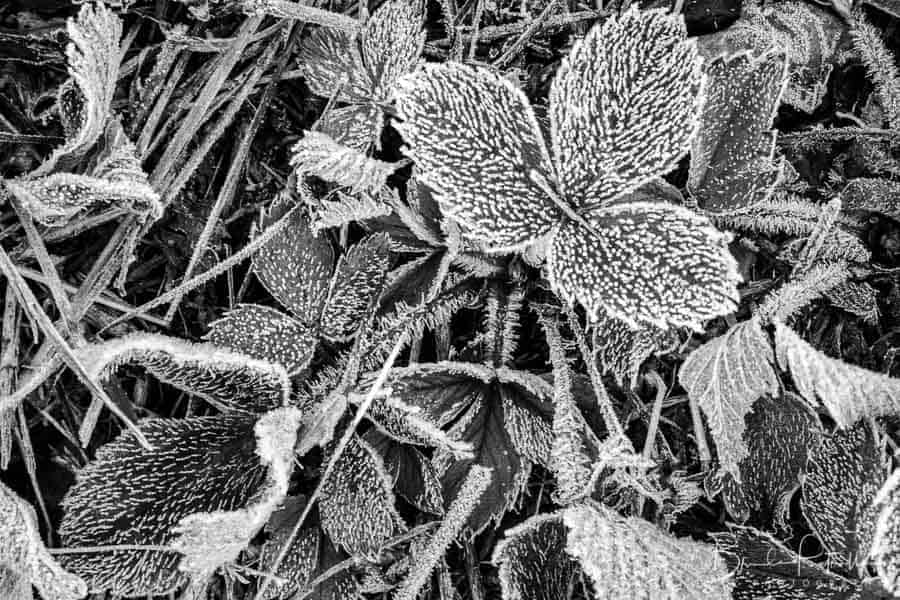
Pick a theme for a week, such as textures, patterns, color, movement, or light, and forget the rest. Don’t obsess over the technical aspects of the camera and how to get the shot perfectly. Try to be creative. Ditch common compositional techniques, like the rule of thirds. No one has to see these photos – the point is not about nailing the shot. This is about training your eye to see more creatively. If you spend time studying one element, such as texture, you will start to see how otherwise mundane subjects become more interesting and you will naturally start to think out of the box about the rest of your photography.
4. Stop Chasing the Shot
One of my favorite ways to get out of a photography funk is to walk my dogs. They are wonderful at getting me outside, and luckily for me, they are very patient when I bring my camera along. The point of this approach is to stop trying to find subjects and instead let them find you. Stay in one place for 5 minutes and just see what you see. Take a picture of something you notice within those 5 minutes. You’ll be surprised at how long that short timeframe will feel, and it actually can be a bit meditative to stand there and wait for a subject to appear. Most of the photos in this article were taken around my property with my dogs. No travel, no epic locations. Just looking around to see what I see.
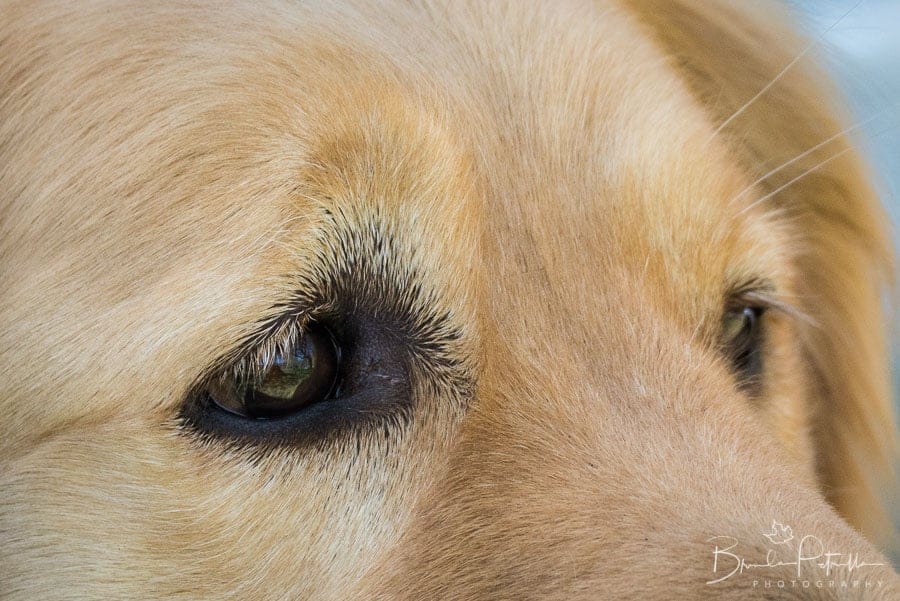
5. Experiment with a New Genre
This is pretty straightforward. If you are a landscape photographer, try your hand at portraiture. If you are an architecture or real estate photographer, give sports photography a shot. Or, if you are a product or food photographer, try pointing your lens at wildlife or nature. You get the idea. The point of this exercise is to expand your understanding of photography as a craft and your comfort and knowledge of your camera by learning new styles of photography. Here is a list of great resources from Improve Photography to get you started in some of the more common photography genres:
- Portraiture Photography
- Architecture or Real Estate Photography (also check out the IP Plus Class on Mastering Real Estate Photography)
- Landscape/Nature/Wildlife Photography (listen to the IP Tripod: The Nature Photography Podcast for tons of helpful info on outdoor photography)
Experiment with new genres, such as sports photography. © Jim Harmer. - Night Sky Photography, including the Northern Lights
- Product Photography (check out Sandy Durau’s awesome tutorial on Product Photography on IP Plus)
- Street Photography
- Macro Photography (listen to Jeff Harmon’s Photo Taco Podcast on Macro on the Cheap)
- Aerial or Drone Photography
- Fashion Photography
- Food and Beverage Photography
- Sports Photography (be sure to check out Jeff Harmon’s Photo Taco Podcast with Sharky James on Sports Photography)
6. Take a Photography Class
Taking a photography class is especially helpful if you are already planning to try Cure #5: Experiment with a New Genre. I am a self-taught photographer, and most of my training has been done online through various resources. Learning about how other photographers approach their compositions, how they post-process images, how they make a business out of photography, etc., and then applying that knowledge to your own situation is super helpful in getting out of a rut. The following links contain extensive, quality training provided through Improve Photography. If you want to get access to more advanced training, I recommend the Improve Photography Plus tutorials, which comes with a paid subscription.

- IP Beginner Training
- IP Premium Training
- IP You Tube Channel
- IP Plus Tutorials
- IP Retreat (sign up for the next one in 2018 – Charleston, SC!)
7. Study Other Photographers and Artists
Another way to help you with that photography funk is to study the work of other photographers and even artists outside of photography. Study their compositions, their use of color, light, texture, and patterns. Try to figure out how you can incorporate some of those themes into your own work. Study the stories the artwork is telling and what elements of the images are compelling or essential to telling that story. Visit galleries, museums, or grab some photobooks from your local library. Importantly, take your time. Studying the work of others should take longer than a swipe of your finger. Which leads me to my next cure…
8. Take a Break
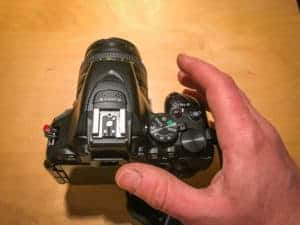
That's right. Put the camera down and stop posting to social media. Don’t even look at Instagram. If you are worried about losing followers, a week really won’t make a significant dent in social media followings, but it may make a big difference to the quality of work you produce. Sometimes the best way to hit the refresh button is to stop altogether. I bet you that after a week or so, you will be itching to pick that camera up again. If photography is your livelihood and putting the camera down for a week just isn’t feasible, then try to carve out time that is focused on creativity with the previous tips and don’t just plug and chug. You won’t regret it!
I hope these tips help with curing your photography funk! Have you been stuck in a photography rut before? How do you cope with photography funk? Please share your thoughts below. Thanks for reading and sharing!


So drinking copious amounts of alcohol and getting depressed by how bad I actually am at photography is not a recommended course of action, it would seem…
Haha – no, I wouldn’t recommend drowning your sorrows! I bet some of these tips will help get you feeling better about your photography. It’s tough getting through those frustrating times, but you can do it! 🙂